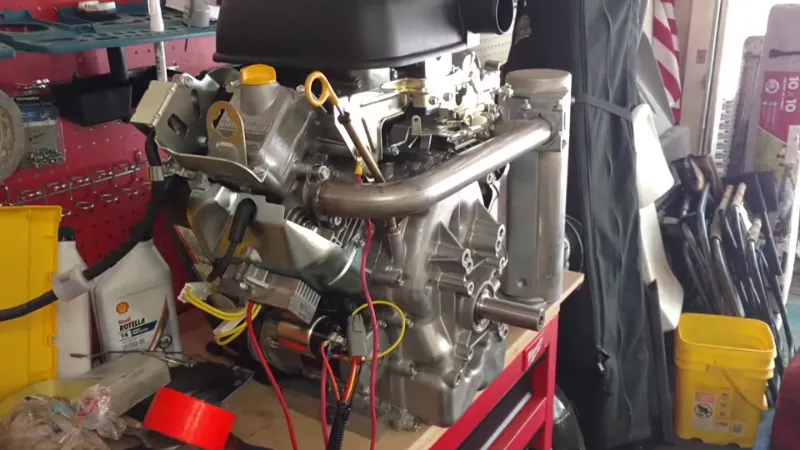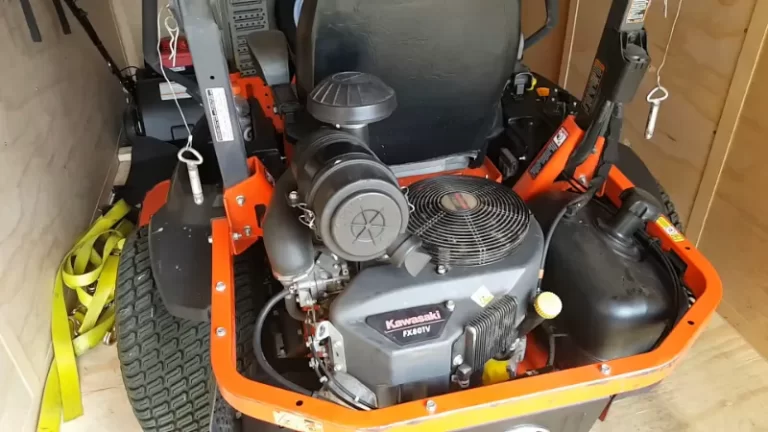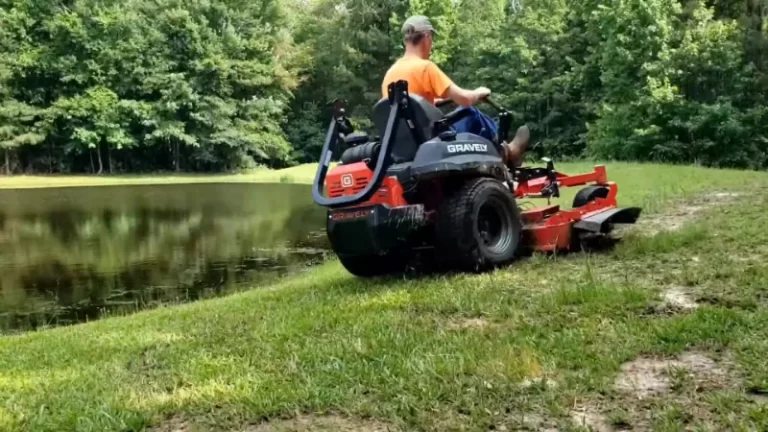35 HP Vanguard Problems and Solutions

The 35 hp Vanguard engine is a powerful workhorse that is commonly used in a variety of applications, from construction equipment to recreational vehicles. While this engine is known for its reliability and durability, it is not immune to common problems that can arise over time.
As a result, it is important for owners of this engine to have a solid understanding of the potential issues they may face and how to address them in a timely and effective manner. In this blog, we will explore some of the most common problems associated with the 35 hp Vanguard engine and provide guidance on how to troubleshoot and resolve them.
You'll Learn About
Common Problems With 35 Hp Vanguard Engine
The 35 hp Vanguard engine is a powerful and reliable engine that is commonly used in outdoor power equipment such as lawn mowers, generators, and utility vehicles. However, like any mechanical device, it can experience issues that can cause it to perform poorly or even fail. It is important to understand common problems with this engine to diagnose and fix issues as quickly as possible to avoid more extensive and expensive repairs.
One common issue with the 35 hp Vanguard engine is vacuum actuated fuel pump problems. This pump is responsible for delivering fuel from the tank to the carburetor, and issues with it can lead to engine stalling or poor performance.
In some cases, the pump can become clogged with debris or fail entirely, which will require replacement. To avoid issues with the fuel pump, it is important to keep the fuel system clean and replace the fuel filter regularly.
Another issue that can occur with the 35 hp Vanguard engine is a diaphragm leak, which can lead to fuel in the crankcase. This problem occurs when the diaphragm in the fuel pump or carburetor becomes damaged or worn, allowing fuel to leak into the engine’s oil supply.
This can cause damage to the engine if left unchecked and can even lead to engine failure. To avoid this issue, it is important to inspect the diaphragm regularly and replace it if necessary.
Carburetor issues are another common problem with the 35 hp Vanguard engine. These issues can include clogged jets, sticky floats, and damaged gaskets, all of which can lead to engine performance problems. To avoid issues with the carburetor, it is important to keep the fuel system clean, use fresh fuel, and inspect the carburetor regularly for signs of wear or damage.
Worn spark plug issues can also cause problems with the 35 hp Vanguard engine. Over time, spark plugs can become fouled or damaged, leading to poor engine performance or failure to start. It is important to replace the spark plug regularly and to use the recommended type and gap size for the engine.
Understanding common problems with the 35 hp Vanguard engine is essential for maintaining its performance and preventing costly repairs. By addressing issues promptly and taking preventative measures, such as keeping the fuel system clean and replacing parts as needed, you can ensure that your engine continues to run smoothly and reliably for years to come.
| Problem | Symptoms | Potential Causes | Solutions |
|---|---|---|---|
| Vacuum actuated fuel pump issues | Engine sputtering or stalling | Fuel pump malfunction | Replace fuel pump |
| Diaphragm leak leading to fuel in crankcase | High oil level, oil smells like gas | Leaking diaphragm in carburetor or fuel pump | Repair or replace carburetor or fuel pump |
| Carburetor issues | Engine runs rough, poor performance | Clogged carburetor jets, faulty carburetor components | Clean or replace carburetor |
| Worn spark plug issues | Engine misfires, poor performance | Worn spark plug, incorrect gap, fouled plug | Replace spark plug, adjust gap, or clean plug |
| Electrical issues | Engine won’t start or runs poorly | Faulty ignition system, wiring issues | Inspect wiring and replace faulty components |
Troubleshooting Vanguard Engine Problems
When encountering issues with a 35 hp Vanguard engine, it is essential to troubleshoot the problem to identify the source. Here are the steps to follow when troubleshooting:
Isolating the Source of the Problem
First, you should gather as much information as possible about the issue to narrow down the potential sources. Then, you should conduct a visual inspection to see if anything appears unusual, such as loose wires, fuel leaks, or damage. Finally, try to isolate the problem by eliminating potential sources through testing.
Working Systematically to Diagnose Issues
Once you have identified the problem, work systematically to diagnose the issue. A good starting point is to refer to the engine manual to help identify the system or component that may be causing the problem. Test the individual components to see if they are working correctly, such as the ignition system, carburetor, or fuel system.
Avoiding Skipping Parts or Systems
One of the most critical aspects of troubleshooting is to avoid skipping parts or systems. It is crucial to diagnose the problem systematically, testing all possible components to find the source. Skipping a component or system could lead to overlooking the problem, and the issue may continue to persist.
In summary, when troubleshooting a 35 hp Vanguard engine, it is important to gather information, conduct a visual inspection, systematically diagnose the problem, and avoid skipping components or systems. By following these steps, you can identify the source of the issue and fix it effectively, saving time and money in the long run.
Solutions for Vanguard Engine Problems
Replacing Worn Parts
One solution for common problems with the Vanguard engine is to replace worn parts. This can include items such as the fuel pump, carburetor, diaphragms, spark plugs, and other parts that may be contributing to engine issues. When replacing these parts, it is important to use genuine Vanguard parts, as aftermarket parts may not fit or perform as well.
Using Fuel Treatments to Prevent Issues
Another solution for common problems with the Vanguard engine is to use fuel treatments to prevent issues. Fuel treatments can help to prevent the buildup of deposits in the fuel system, which can lead to clogged fuel lines and carburetors. They can also help to prevent ethanol-related problems, which can be common in modern fuel blends.
Ensuring Proper Maintenance of Engine
The most important solution for Vanguard engine problems is ensuring proper maintenance of the engine. This includes regular oil changes, air filter changes, and other routine maintenance tasks. It is also important to use the correct oil and fuel for the engine, as using the wrong type of oil or fuel can lead to problems over time.
In addition to these solutions, it is important to follow the manufacturer’s recommendations for maintenance and troubleshooting. Vanguard engines are designed to be reliable and durable, but they do require proper maintenance and care to perform at their best. By following these recommendations and being proactive in addressing issues as they arise, Vanguard engine owners can enjoy many years of trouble-free performance from their engines.
Case Study: Vanguard Engine 613477-2186-g1
Symptoms of Issues
The 613477-2186-g1 Vanguard engine is prone to a range of problems. The symptoms of issues with this engine model are varied but typically include poor performance, rough running, difficulty starting, and stalling. Additionally, there may be signs of oil leaks, black smoke, and unburned fuel odors.
Potential Causes
The most common problems with the Vanguard engine 613477-2186-g1 are linked to the carburetor, fuel pump, and spark plugs. Faulty carburetors can cause engine stalling and rough running, while fuel pump problems can result in a lack of fuel delivery to the engine. Issues with spark plugs can also lead to poor performance, difficulty starting, and misfires.
Solutions
The solution to engine problems with the Vanguard engine 613477-2186-g1 will depend on the specific issues. One solution may be to replace the carburetor, fuel pump, or spark plugs, depending on the root cause of the problems.
Fuel treatments can also be used to prevent issues related to dirty fuel or buildup in the engine. Proper maintenance of the engine, including regular oil changes, air filter replacements, and spark plug checks, can help prevent problems from arising in the first place.
In addition to these solutions, it is also essential to follow the manufacturer’s guidelines for the Vanguard engine 613477-2186-g1. These guidelines outline the recommended maintenance schedule, which includes oil changes, air filter replacements, and spark plug checks. Adhering to these guidelines can help prevent engine problems and ensure optimal performance of the engine.
The Vanguard engine 613477-2186-g1 is prone to a range of issues, including poor performance, rough running, and difficulty starting. The most common problems are related to the carburetor, fuel pump, and spark plugs.
Solutions may include replacing worn parts, using fuel treatments to prevent issues, and ensuring proper maintenance of the engine. It is also crucial to follow the manufacturer’s guidelines to prevent engine problems and ensure optimal performance of the engine.
Tips to Consider When Dealing With Vanguard Engine Problems
Here are some additional tips to consider when dealing with Vanguard engine problems:
Keep the Fuel System Clean
Dirt and debris in the fuel system can cause problems with the engine’s performance, including issues with the carburetor and fuel pump. Regularly clean the fuel tank, lines, and filters to prevent contamination.
Check the Oil Level Frequently
As mentioned earlier, fuel can leak into the crankcase due to diaphragm leaks or other issues. This can cause the oil level to rise, which can be damaging to the engine. Check the oil level frequently and change the oil if necessary.
Follow the Manufacturer’s Guidelines for Maintenance
Vanguard engines, like any engine, require regular maintenance to keep them running smoothly. Follow the manufacturer’s guidelines for oil changes, filter replacements, and other routine maintenance tasks. This can help prevent problems from occurring and prolong the life of the engine.
Use High-quality Parts and Fluids
When replacing parts or fluids in your engine, it’s important to use high-quality products. This can help prevent premature wear and damage to the engine. Stick with reputable brands and avoid using cheap or subpar products.
Store the Engine Properly
If you’re storing your Vanguard engine for an extended period of time, it’s important to prepare it properly. Drain the fuel from the tank and carburetor, and remove the spark plug. Store the engine in a dry, cool location to prevent rust and other damage.
By following these additional tips, you can help prevent problems with your Vanguard engine and keep it running smoothly for years to come.
Frequently Asked Questions
What Are Some Common Maintenance Tasks That Can Help Prevent Vanguard Engine Problems?
A: Regular oil changes, air filter cleaning/replacement, and spark plug maintenance are important steps to maintain the health of your Vanguard engine and helps to prevent small engine problem. It’s also important to check and maintain proper fuel and oil levels, and to ensure that the engine is not exposed to extreme temperature or humidity.
Can Using Lower Quality Fuel Cause Problems With a Vanguard Engine?
A: Yes, using low quality or contaminated fuel can lead to problems with the engine’s fuel system and cause damage over time. It’s important to use high quality fuel and to avoid using old or contaminated fuel.
What Should Be Done if the Engine is Producing Excessive Smoke?
A: Excessive smoke can be a sign of several different issues with the engine, including an oil leak, worn piston rings, or a clogged air filter. In order to address the problem, the source of the smoke needs to be identified through systematic troubleshooting, and then the appropriate repairs can be made.
How Often Should the Spark Plugs Be Replaced on a Vanguard Engine?
A: The frequency of spark plug replacement depends on a variety of factors, including the type of use the engine is seeing and the condition of the plugs themselves. As a general rule, spark plugs should be replaced every 100 hours of use or at least once per season to ensure optimal performance.
What Are Some Signs That the Fuel Pump May Be Failing?
A: If the engine is having trouble starting or staying running, or if it’s producing uneven power, it’s possible that the fuel pump may be failing. Other signs of a failing fuel pump can include loss of power or a high-pitched whining noise coming from the pump. If any of these symptoms are present, the fuel pump should be checked and replaced if necessary.
Conclusion
The 35 hp Vanguard engine is a reliable and powerful machine. However, like any other engine, it can develop issues that require proper maintenance and troubleshooting. We have highlighted some common problems that affect this engine, including issues with the vacuum actuated fuel pump, carburetor, diaphragm, and spark plug.
By using proper troubleshooting techniques and working systematically, owners of the 35 hp Vanguard engine can identify and isolate the source of any problems. Solutions may involve replacing worn parts, using fuel treatments to prevent issues, and ensuring proper maintenance of the engine.
It is crucial to address any issues promptly to prevent further damage and prolong the life of the engine. By following the recommendations in this article, owners of the 35 hp Vanguard engine can ensure that their equipment runs smoothly and efficiently for many years to come.





